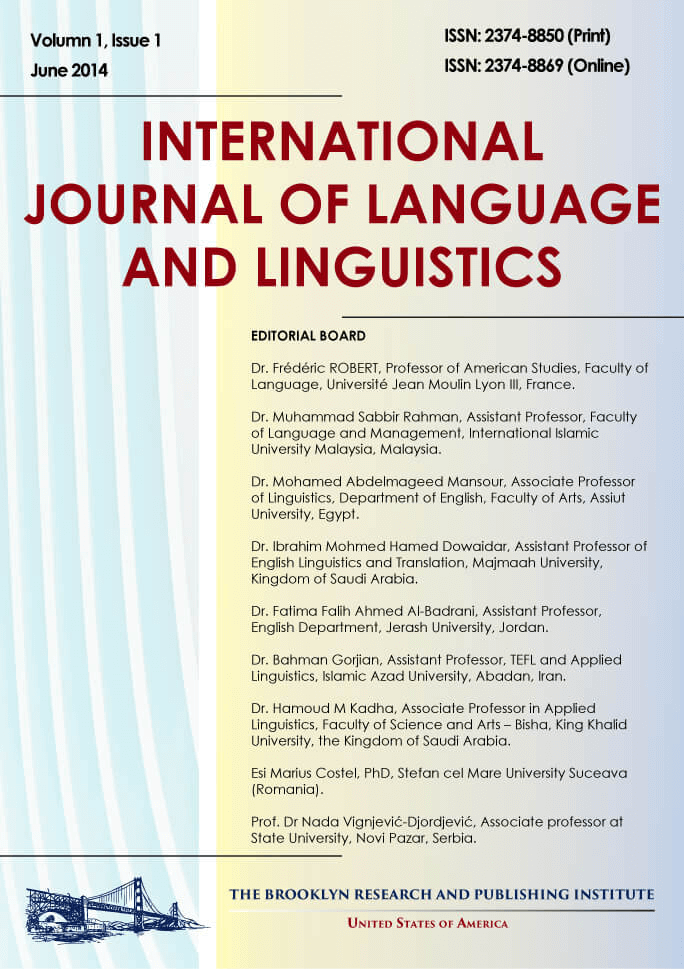Mother Tongue Syntactical Influence in a ESL Class
Mahendran Maniam, Hema Vanita Kesevan
Abstract
This study seeks to find out the syntactical influence of the L1 (Tamil) grammar that the students of Tamil schools
use interchangeably in their daily writing of L2, namely English. Many extensive researches have been carried
out to study first language interference and its effect on second language learners. It has been said that the
transfer of mother tongue (native) language is one of the major sources for L2 learners to make mistakes in their
writing (Lightbown & Spada, 1999). Meanwhile Ellis (1997) refers to interference as ‘transfer’ which he defines
as being “the influence that the learner’s exerts over the acquisition of an L2” This study followed a mixture of
qualitative and quantitative survey research design, the purpose of which is to find out the influence of L1
linguistic items in the writing of English (L2), among 96 standard 5 students of a selected Tamil school in
Malaysia. The research revealed that the use of wrong syntactical order was quite rampant in the analysis of the
samples’ L2 writing. It has been stated in the Literature of this study that the Tamil language and the English
language have different syntactical order. From the data collected, we could observe that 21.9% or
approximately 21 subjects had used the syntactical structure of the Tamil language in their L2 writing. The 21
students made a total of 27 errors in their sentences.
Full Text: PDF
International Journal of Language & Linguistics
ISSN 2374-8850 (Print), 2374-8869 (Online) DOI: 10.30845/ijll
Visitors Counter
3827823
| 8097 | |
| |
7490 |
| |
146062 |
| |
154325 |
| 3827823 | |
| 62 |

